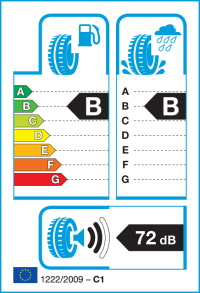New Eu tyre labelling rules coming in
New easy to use tyre labelling system to make choosing tyres much easier
The first of November saw new European Union tyre labelling regulations come into force.
The idea is that consumers will be able to see at a glance, how efficient the tyres they are about to buy are, using an easy to read labelling system, a bit like the ones used to show energy efficiency on fridges and dishwashers.
Cheaper to run, better and quieter
The criteria for the new tyres are :
* Fuel efficiency, this relates to rolling resistance between the tyre and the road. When rolling resistance is reduced, tyres help the vehicle to use less petrol
* Wet grip, this is the most important tyre safety feature and means that the tyre has a much better grip on the road and therefore a shorter braking distance particularly when it is wet.
* Noise level, the tyre generates less noise on the road.
Approximately 115 million tyres are sold in the EU every year so this new information should be very helpful when the consumer is making a decision about which tyres will be best for optimum performance.
There has been a lot of publicity recently about the state of British tyres with statistics revealing that when checked, over 53% of all vehicles had at least one tyre below the legal minimum of 1.6mm, and a rather frightening 95.8% of vehicles had one tyre at least below 2mm - time for new tyres by the look of things!
Giving it the green light

new tyre grading system sticker
The new label will grade tyres from G which is red and is the worst scoring tyre, to A which is green and is the best - have a look at the picture to get an idea of what the new label will look like - it is pretty self explanatory.
The label grades the tyres from A to G for rollling resistance or fuel efficiency (left hand side of the label), wet grip or safety (right hand side of the label) and noise levels or decibels (bottom centre).
The idea is that consumers can compare the various ratings of tyres before they buy them and decide which tyre they want advisedly, based on its safety and performance rating.
Estimates from the EU commission state that between 20% and 30% of a vehicles fuel consumption is accounted for by how efficient its tyres are, so in theory you could save up to £184 a year if you choose tyres which give better performance. Although higher performance tyres are more expensive initially, you should be saving money by the second year of your tyre's life. It is also really important that you regularly check that your tyres are correctly inflated as this can affect performance and tyre efficiency greatly as well.
Consumers broadly in favour
A survey has shown that 80 per cent of consumers are in favour of tyre labelling and would be willing to pay more for safer and more fuel efficient tyres. The main advantage is that it give consumers a quick overview and a simple easy to read label so that they have all the information they need in an easy and accessible form and can decide what their priorities are when getting new tyres.
The new legislation comes as part of the energy efficiency action plan which aims to reduce the total energy consumption of the EU by 20% by 2020.
Jacob Bangsgaard, Director General of the FIA Region I office, said “We welcome this regulation as an important impetus for the tyre industry to continue to build on its efforts to improve both the safety and efficiency performance of its products.”
